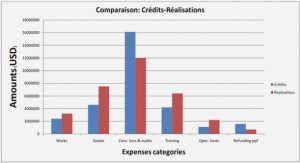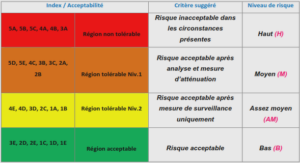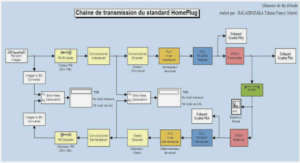VARIATIONS TEXTURALES DANS DES GOUTTELETTES SULFURÉES DE MORB CAUSÉES
Coefficients De Partage Liquide Silicate-Liquide Sulfuré Pour Des Éléments Chalcophiles Et Cristallisation De Gouttelettes Sulfurees De Morb
It is commonly accepted that sulphide liquid and minerals play an important role in the chalcophile and siderophile elements behaviour during Ni-Cu-Platinum-Group Elements (PGE) ore deposit formations and in how the chalcophile and siderophile elements behave during mantle melting (e.g. Barnes & Lightfoot, 2005; Peach et ai, 1990; Rehkamper et al, 1999; Bézos et al, 2005).
The behaviour of chalcophile elements in the mantle is less well understood because their sulphide melt-silicate melt partition coefficients are poorly known. The partition coefficient, or Nerst partition coefficient, predicts the affinity of an element between two phases. Nickel and Co are controlled by the olivine in the mantle (Dol/melt~10 and Doi/meit_29 e.g. Irving, 1978); Sn, Zn, Cd, Ag and Bi behave as lithophile elements (e.g. Hertogen et al, 1980; Yi et al, 2000; Kamenetsky, in press); Cu and Te are controlled by the sulphides (e.g. Yi et al 2000). The complimentary behaviour of Se, Cu and Ag in a range of MORB glasses (Jenner et ai, 2010), suggests that the partitioning behaviour of
Ag and Se is controlled by mantle sulphides. Hart & Gaetani (2006) propose that the Pb is control by sulphides in the mantle. New sulphide melt-silicate melt partition coefficient values for these elements would allow a better understanding of the role of sulphides the in mantle.
Most models for of the formation of Ni-Cu-PGE ore deposit suggest that a sulphide liquid, segregated from a S-saturated silicate liquid, collect all the chalcophile and siderophile elements from the silicate liquid before accumulating and crystallizing (e.g. Naldrett & Duke, 1980). Depending on their ability to substitute for Fe, Ni or Cu the PGE could be present in the form of solid solution in the sulphide minerals or they could be present as Platinum-Group Minerals (PGM). If PGM are formed they may represent exsolutions from the sulphide minerals (e.g. Barnes et al., 2008) or they may have crystallized from the sulphide liquid (Howell and McDonald, 2010; Dare et al., 2010).
Fresh Mid-Ocean-Ridge Basalt (MORB) glasses contain sulphides that have been quenched from —1200°C to deep ocean temperature in few minutes (Moore, 1975). Thus, MORB glasses and their sulphide droplets provide a unique opportunity to investigate sulphide melt-silicate melt equilibrium and the possibility of PGM formation in quickly cooled sulphides. Sulphides occurrences in MORB are variable (Moore & Calk, 1971; Moore & Schilling, 1973; Yeats & Mathez 1976; Czamanske & Moore, 1977; Patten et al, accepted). The most common sulphide occurrences are spherical sulphide droplets that formed before eruption and which are likely to have equilibrated with the silicate liquid (Mathez, 1976). They have textures varying from uniform fine-grained intergrowth
of monosulphide solid solution (Mss) and intermediate solid solution (ISS) to zoned with one part containing subhedral massive Mss and the other quenched Iss {e.g. Mathez, 1976; Czamanske & Moore, 1977; Patten et al, accepted). These textural differences are controlled by the undercooling of the sulphide droplets (Patten et al, accepted).
Sulphide droplets have already been used to calculate some partition coefficients using Instrumental Neutron Activation Analysis (INAA) and Radiochemical Neutron Activation Analysis (RNAA) (Peach et al, 1990). The Advent of Laser Ablation- Inductively Coupled Plasma-Mass Spectrometry (LA-ICP-MS) allows for the determination of a much larger group of elements at much better spatial resolutions than were available to previous workers.
|
Table des matières
INTRODUCTION GÉNÉRALE
CHAPITRE I
VARIATIONS TEXTURALES DANS DES GOUTTELETTES SULFURÉES DE MORB CAUSÉES PAR DIFÉRENTES HISTOIRES DE CRISTALLISATION
Résumé
Contributions des auteurs
TEXTURAL VARIATIONS IN MORB SULFIDE DROPLETS CAUSED BY DIFFERENCES IN CRYSTALLIZATION HISTORY
ABSTRACT
INTRODUCTION
SAMPLING AND ANALYTICAL METHODS
RESULTS
The texture of sulfide droplets
Relationship between diameter and texture
Composition of the sulfide droplets
Occurrence of magnetite
DISCUSSION
Processes of crystallization
Implications of crystallization rates on the textures
Why are the small droplets more undercooled?
Implication of the undercooling of sulfide droplets on solidification history
Pentlandite content of sulfide droplets
CONCLUSIONS
ACKNOWLEDGMENTS
REFERENCES
APPENDIX
Appendix 1: Sulfide droplets bulk composition calculations
Appendix 2: Whole-rock Ni values
Appendix 3: Composition of oxide inclusions in sulfide droplets
FIGURE CAPTIONS
CHAPITRE II
COEFFICIENTS DE PARTAGE LIQUIDE SILICATE-LIQUIDE SULFURÉ POUR DES ÉLÉMENTS CHALCOPHILES ET CRISTALLISATION DE GOUTTELETTES SULFUREES DE MORB
Résumé
Contributions des auteurs
SIDEROPHILE AND CHALCOPHILE ELEMENTS DISTRIBUTION IN MORB
SULPHIDE DROPLETS: DETERMINATION OF NEW SULPHIDE MELT-SILICATE
MELT PARTITION COEFFICIENTS AND EARLY SULPHIDE CRYSTALLISATION
HISTORY
ABSTRACT
INTRODUCTION
SAMPLING AND ANALYTICAL METHOD
RESULTS
Sulphide droplets population
LA-ICP-MS results for fine-grained and coarse-grained sulphide droplets
LA-ICP-MS results for the host glass
Partition coefficients
LA-ICP-MS analyses of zoned sulphide droplets
DISCUSSION
MORB differentiation
Sulphide droplets transport to the surface
Quenching of sulphide droplets
Sulphide importance in the mantle
Crystallisation of a sulphide liquid
CONCLUSIONS
ACKNOWLEDGMENTS
REFERENCES
FIGURE CAPTIONS
CONCLUSIONS GENERALES
REMERCIEMENTS
RÉFÉRENCES
ANNEXES
![]() Télécharger le rapport complet
Télécharger le rapport complet






